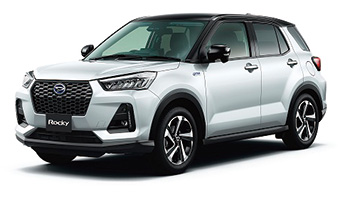Fundamental Approach and Targets
-
Fundamental Approach and Targets
-
Initiatives for Products
-
Initiatives for Production
-
Initiatives for Non-production
-
Initiatives for Logistics
Achieving Carbon Neutrality by 2050
The Daihatsu Group sees environmental initiatives as a management strategy essential for maintaining corporate continuity. Accordingly, we are working toward achieving carbon neutrality by 2050 launched by Japanese government, a global target, with a focus on measures for reducing CO2 emissions in all areas including products, production, and logistics and on building a low-carbon society.
To achieve product carbon neutrality, Daihatsu will electrify vehicles sold in Japan at the best time to do so and make additional efforts to reduce CO2 associated with materials and parts, as well as CO2 emitted during fuel manufacturing. With the goal of achieving carbon neutrality by 2050, we will also promote research and development of technologies to reduce CO2 emissions when manufacturing materials, parts, and fuel.
With regard to production, we have set a target of achieving carbon neutrality in production by 2035 and are working to reduce CO2 emissions with a focus on three areas: extensive energy saving by pursuing SSC (simple, slim, and compact), development and incorporation of innovative technologies, and utilization of renewable energy. We will also take action in non-production and logistics areas with a target of reducing CO2 emissions in production, non-production, and logistics by 68% compared to 2019 levels by 2035.
Daihatsu’s Electrification Initiatives
Based on the basic concepts of “high quality but affordable products,” “mastering the smallest details,” and “providing advanced technologies to everyone,” Daihatsu has been working to create cars tailored to the lifestyles of its customers. Over many years, we have pursued higher fuel efficiency and lighter vehicles to achieve the highest levels of environmental performance even in vehicles with conventional engines. In today’s world, as we pursue even further reductions in CO2 to reach carbon neutrality, we will achieve the ultimate in eco-performance based on the technology and expertise that we have developed through the creation of small-size cars while pursuing electrification by staying close to customers’ lives in order to provide high-quality, but affordable products accessible to all. In addition, we have developed e-SMART HYBRID, a hybrid system ideal for small-size cars with excellent environmental performance that was first used in the HEV Rocky launched in 2021. We will expand the use of e-SMART HYBRID for mini-vehicles in the future.
 The e-SMART HYBRID system, used on the HEV Rocky, adopts a series structure in which an engine generates electricity to drive a motor.
The e-SMART HYBRID system, used on the HEV Rocky, adopts a series structure in which an engine generates electricity to drive a motor.